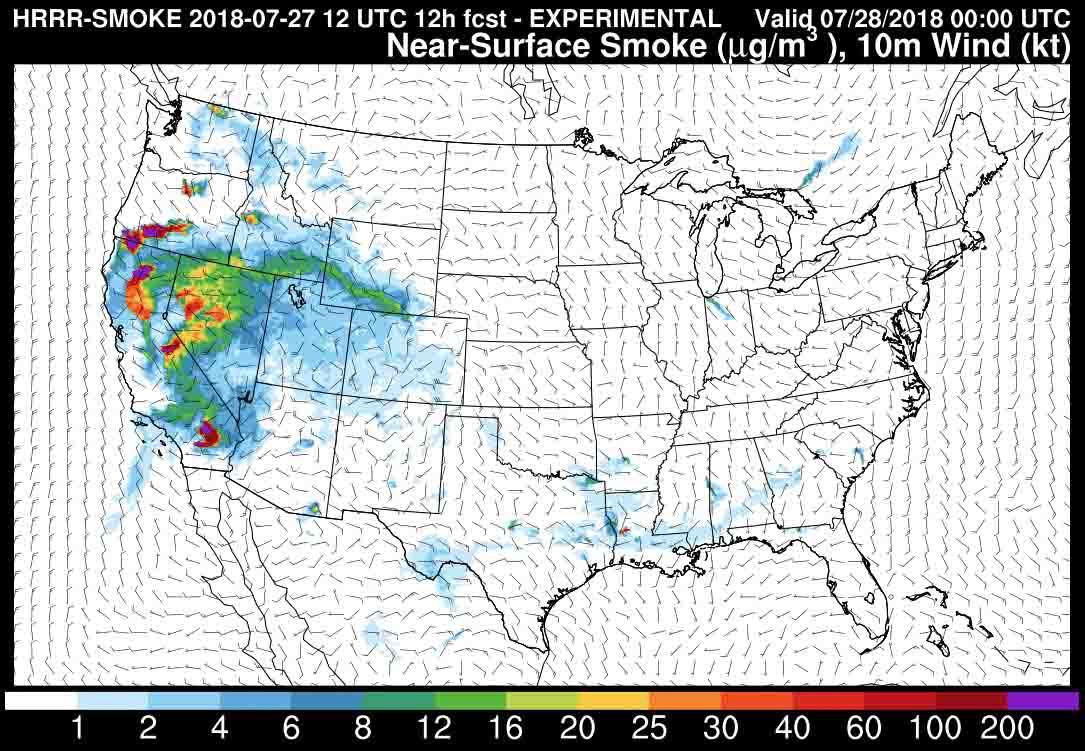 This is the forecast for wildfire smoke at 5 p.m. PDT Friday July 27. Wildfires in Oregon and California are producing large quantities of smoke that will impact southwest Oregon and much of California and Nevada. Click on the image to see a larger version.
This is the forecast for wildfire smoke at 5 p.m. PDT Friday July 27. Wildfires in Oregon and California are producing large quantities of smoke that will impact southwest Oregon and much of California and Nevada. Click on the image to see a larger version.
Map by NOAA’s Earth System Research Laboratory.





